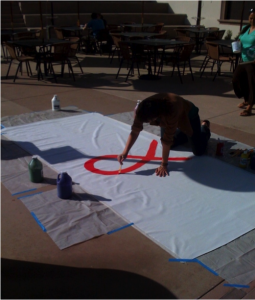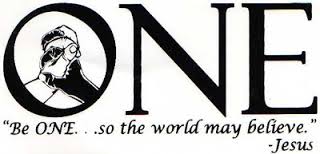If you close your eyes, can you imagine the 34 million people living with HIV/AIDS? Can you see their faces, hear their stories? Part of the problem with the data of statistics is that it is difficult for us to wrap our heads around numbers so big. When we think about the global AIDS pandemic, statistics are important. We need to know the depth of the problem. We need to understand how urgent a solution really is. But perhaps more important than statistics are stories. They tell what the numbers cannot speak.
Stories give us a way to make connections over deep divides; stories challenge and inspire us; stories invite us to re-think our own identity and our own patterns of behaviors as we face the nitty-gritty reality of other people’s struggles. For me, when I think of HIV/AIDS, I don’t think of nameless faces, or charts on a webpage. I think of Naomi, Esther, Mary, Veronica, Wilfred– women living in Naivasha, Kenya, who meet weekly to support and encourage one another. When I interviewed them, Mary told me that they have only sad stories to tell. Their children are malnourished, their region is in a severe drought, they must walk a mile each day to fetch water for their families, and are vulnerable to sexual violence along the way. Wilfred told me that even though they have access to free medications–delivered weekly by an NGO–they don’t always have enough food to eat, and the medications can’t be taken on an empty stomach. Yet these women stand together in solidarity, and care for each other’s children in times of need. They are looking for ways to establish a small business together so that they can create jewelry to sell. They tell me that they trust in God, and God will be with them in their suffering.
I think of Santiago, a 51-year old Mexican man whom I met at a safe house for migrants in Tijuana. He grew up in Sinaloa in a large Catholic family, but his father was very abusive towards his mother. When Santiago escaped the trauma of his home life at the age of ten, no one accompanied him. A sympathetic neighbor gave him money for bus fare, which took him as far as Mexico City. Eventually he made his way to Nogales, then a farm in Arizona, and then a farm in east county San Diego. His addiction to methamphetamine sent his life spiraling out of control, and he tested positive for HIV when he was hospitalized for a drug overdose. He was deported and is trying to put his life back together now. He attends Narcotics Anonymous meetings daily and feels lucky to have access to pastoral care when a Catholic priest visits the group home where he lives. “It makes me sad to talk about my life,” he told me. “I’m not blaming anyone though. I blame myself. I’m not proud of the drug use. I enjoyed being under the influence of drugs, but I know that it was not the right thing to do. It was a kind of escape for me.” Later Santiago tells me that he is grateful for the strength God gives him to get through each day.
When I think of HIV/AIDS in the United States, I don’t imagine 1.1 million people all at once. I think of the four young men, San Diego residents, who came to my class to share their stories with USD students. They told us about their battles with alcohol and drug abuse, the problem of homelessness among many gay youth in San Diego, and the realities of stigma and discrimination in our own backyard.
I think of Crystal, Keesha, Diva, and Grace– women I worked with in Chicago while doing my graduate studies. Grace was the youngest widow I had ever met. She met Sam when she had just graduated from college. She was 22 years old, and in that magical summer Sam swept her off her feet. Later that year, a previous girlfriend contacted Sam and disclosed her HIV-status. She had tested positive, and wanted him to know. Sam and Grace were tested—both positive. They got married in the Catholic Church later that year, in a ceremony that Grace describes with tears in her eyes. “We wrote our own vows,” she told me, “and they were very reflective of the possibilities of death in the future. Promising to love and care for one another. We both had in our mind that this may not be forever, here, you know. I remember them blessing us, everyone holding out their hands. And I remember that power, that sense of peace.” Ten months later, Sam died of AIDS. The same priest who married them presided at Sam’s funeral. Grace, who has been able to access anti-retroviral drug therapy, continues to speak to high school students and youth groups about HIV/AIDS.
34 million people worldwide are living with HIV or AIDS—and each one of them has her or his own story. Stories of pain, trauma, endurance, and hope. Every year on December 1st the public health community and AIDS activists around the world mourn the deaths of so many who’ve died of AIDS and celebrate the great strides made to comfort the afflicted and eradicate future infections. I invite you to read this year’s UNAIDS Report.
As followers of Jesus the Christ, we are called to respond with compassion and action of behalf of justice. We are called to fight ignorance, discrimination, and stigma. We are called to be like Jesus, who cared for the sick, who dined with sinners, who reached out to the marginalized in his community. We are invited to open our eyes and our hearts to the stories of suffering around us.
In their 1990 document, Called to Compassion and Responsibility, the United States Bishops offer the following guiding principles in analyzing the impacts of HIV/AIDS:
1. AIDS is an illness to which all must respond in a manner consistent with the best medical and scientific information available.
2. As members of the Church and society, we must reach out with compassion to those exposed to or experiencing this disease and must stand in solidarity with them and their families.
3. As bishops, we must offer a clear presentation of Catholic moral teaching concerning human intimacy and sexuality.
4. Discrimination and violence against persons with AIDS and with HIV infection are unjust and immoral.
5. Social realities like poverty and oppression and psychological factors like loneliness and alienation can strongly influence people’s decisions to behave in ways which expose them to the AIDS virus.
6. Along with other groups in society, the Church must work to eliminate the harsh realities of poverty and despair.
7. The expression of human sexuality should resemble God’s love in being loving, faithful, and committed. Human sexuality in marriage is intrinsically oriented to permanent commitment, love, and openness to new life.
8. The spread of AIDS will not be halted unless people live in accord with authentic human values pertaining to personhood and sexuality.
9. Since AIDS can be transmitted through intravenous drug use, there is need for drug treatment programs, a halt to traffic in illicit drugs, and efforts to eliminate the causes of addiction.
10. Considering the widespread ignorance and misunderstanding about HIV infection and its modes of transmission, educational programs about the medical aspects of the disease and legitimate ways of preventing it are also needed.
One can see from this list of ten that AIDS is multi-dimensional; so too must be our response. As a faith community we remember that Jesus knows what it is like to suffer; every image of the cross reminds us that Jesus himself experienced suffering, pain, and death. And yet in faith we understand that when we suffer, and when our loved ones suffer, God is with us in a special way, inviting us to rest in God’s love and promises of new and everlasting life to come.
As followers of Jesus we are members of the Body of Christ. And the Body of Christ has AIDS. Many Catholics have been personally affected. Maybe you’ve lost a loved one. Maybe you have a friend living with HIV. Maybe you’ve volunteered at a local AIDS outreach organization. Maybe you have recently tested positive yourself, and are processing the news, a fresh wound that feels burdensome and heavy. No matter our connection, God invites us to draw near. On this World AIDS Day, we have the opportunity to renew our commitment to this struggle, to invite the Holy Spirit to sustain us in our continued work, to discern how God may be calling us to do more.
Advent is a time to prepare our hearts for the coming of the Christ child at Christmas. We wait in anticipation, in joyful hope. On December 1, we pray for all of those infected and affected by HIV/AIDS. We ask God to open our eyes and open our hearts.
God of Light, with you there is always hope, and in you, there is fullness of life. Revive us with your Spirit, inspire us with your love, nourish us with your peace, that light may shine upon all who are weary and overshadowed by the darkness of sickness. Let us be beacons of hope, children of light. We pray in Jesus’ name, Amen.




